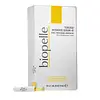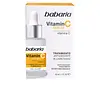What's inside
What's inside
 Key Ingredients
Key Ingredients

 Benefits
Benefits

 Concerns
Concerns

 Ingredients Side-by-side
Ingredients Side-by-side

Propylene Glycol
HumectantSnail Secretion Filtrate
Skin ConditioningWater
Skin ConditioningMaltodextrin
AbsorbentSaccharide Isomerate
HumectantHexylene Glycol
EmulsifyingPolysorbate 20
EmulsifyingPEG/PPG-20/6 Dimethicone
EmulsifyingSodium Ascorbyl Phosphate
AntioxidantSodium Chloride
MaskingFructose
HumectantGlucose
HumectantTocopheryl Acetate
AntioxidantPolyquaternium-10
Citric Acid
BufferingTetrasodium EDTA
Phenoxyethanol
PreservativeParfum
MaskingUrea
BufferingDextrin
AbsorbentSucrose
HumectantGeraniol
PerfumingAspartic Acid
MaskingGlutamic Acid
HumectantAlanine
MaskingHexyl Nicotinate
EmollientSodium Citrate
BufferingHydroxycitronellal
PerfumingLinalool
PerfumingCoumarin
PerfumingHexyl Cinnamal
PerfumingLimonene
PerfumingPropylene Glycol, Snail Secretion Filtrate, Water, Maltodextrin, Saccharide Isomerate, Hexylene Glycol, Polysorbate 20, PEG/PPG-20/6 Dimethicone, Sodium Ascorbyl Phosphate, Sodium Chloride, Fructose, Glucose, Tocopheryl Acetate, Polyquaternium-10, Citric Acid, Tetrasodium EDTA, Phenoxyethanol, Parfum, Urea, Dextrin, Sucrose, Geraniol, Aspartic Acid, Glutamic Acid, Alanine, Hexyl Nicotinate, Sodium Citrate, Hydroxycitronellal, Linalool, Coumarin, Hexyl Cinnamal, Limonene
Water
Skin ConditioningPropylene Glycol
Humectant3-O-Ethyl Ascorbic Acid
Skin ConditioningAlcohol Denat.
AntimicrobialTocopheryl Acetate
AntioxidantTri (Polyglyceryl-3/Lauryl) Hydrogenated Trilinoleate
EmulsifyingPolyisobutene
Polysorbate 20
EmulsifyingSorbitan Isostearate
EmulsifyingPolyacrylate-13
Parfum
MaskingTetrasodium EDTA
Xanthan Gum
EmulsifyingBenzoic Acid
MaskingDisodium EDTA
Sorbic Acid
PreservativeSodium Polyacrylate
AbsorbentCitric Acid
BufferingBenzyl Alcohol
PerfumingLimonene
PerfumingHexyl Cinnamal
PerfumingLinalool
PerfumingGeraniol
PerfumingWater, Propylene Glycol, 3-O-Ethyl Ascorbic Acid, Alcohol Denat., Tocopheryl Acetate, Tri (Polyglyceryl-3/Lauryl) Hydrogenated Trilinoleate, Polyisobutene, Polysorbate 20, Sorbitan Isostearate, Polyacrylate-13, Parfum, Tetrasodium EDTA, Xanthan Gum, Benzoic Acid, Disodium EDTA, Sorbic Acid, Sodium Polyacrylate, Citric Acid, Benzyl Alcohol, Limonene, Hexyl Cinnamal, Linalool, Geraniol
Ingredients Explained
These ingredients are found in both products.
Ingredients higher up in an ingredient list are typically present in a larger amount.
Citric Acid is an alpha hydroxy acid (AHA) naturally found in citrus fruits like oranges, lemons, and limes.
Like other AHAs, citric acid can exfoliate skin by breaking down the bonds that hold dead skin cells together. This helps reveal smoother and brighter skin underneath.
However, this exfoliating effect only happens at high concentrations (20%) which can be hard to find in cosmetic products.
Due to this, citric acid is usually included in small amounts as a pH adjuster. This helps keep products slightly more acidic and compatible with skin's natural pH.
In skincare formulas, citric acid can:
While it can provide some skin benefits, research shows lactic acid and glycolic acid are generally more effective and less irritating exfoliants.
Most citric acid used in skincare today is made by fermenting sugars (usually from molasses). This synthetic version is identical to the natural citrus form but easier to stabilize and use in formulations.
Read more about some other popular AHA's here:
Learn more about Citric AcidGeraniol is used to add fragrance/parfum to a product. It is the main component of citronellol. It is a monoterpenoid and an alcohol.
Monoterpenes are naturally found in many parts of different plants.
Geraniol can be found in many essential oils including Rose Oil and Citronella Oil. The scent of Geraniol is often described as "rose-like". Many foods also contain Geraniol for fruit flavoring.
Geraniol can irritate the skin when exposed to air. However, irritation depends on the ability of geraniol to penetrate into the skin. In general, geraniol is not able to penetrate skin easily.
Geraniol is colorless and has low water-solubility. However, it is soluble in common organic solvents.
Like citronellol, it is a natural insect repellent.
2,6-Octadien-1-ol, 3,7-dimethyl-, (2E)-
Learn more about GeraniolHexyl Cinnamal is a fragrance ingredient with a similar scent to jasmine. It can be naturally found in chamomile essential oil.
This ingredient is a known EU allergen and may sensitize the skin. The EU requires this ingredient to be listed separately on an ingredients list.
Hexyl Cinnamal is not water soluble but is soluble in oils.
Learn more about Hexyl CinnamalLimonene is a fragrance that adds scent and taste to a formulation.
It's found in the peel oil of citrus fruits and other plants such as lavender and eucalyptus. The scent of limonene is generally described as "sweet citrus".
Limonene acts as an antioxidant, meaning it helps neutralize free radicals.
When exposed to air, oxidized limonene may sensitize the skin. Because of this, limonene is often avoided by people with sensitive skin.
The term 'fragrance' is not regulated in many countries. In many cases, it is up to the brand to define this term. For instance, many brands choose to label themselves as "fragrance-free" because they are not using synthetic fragrances. However, their products may still contain ingredients such as essential oils that are considered a fragrance.
Learn more about LimoneneLinalool is a fragrance and helps add scent to products. It's derived from common plants such as cinnamon, mint, citrus, and lavender.
Like Limonene, this ingredient oxidizes when exposed to air. Oxidized linalool can cause allergies and skin sensitivity.
This ingredient has a scent that is floral, spicy tropical, and citrus-like.
Learn more about LinaloolParfum is a catch-all term for an ingredient or more that is used to give a scent to products.
Also called "fragrance", this ingredient can be a blend of hundreds of chemicals or plant oils. This means every product with "fragrance" or "parfum" in the ingredients list is a different mixture.
For instance, Habanolide is a proprietary trade name for a specific aroma chemical. When used as a fragrance ingredient in cosmetics, most aroma chemicals fall under the broad labeling category of “FRAGRANCE” or “PARFUM” according to EU and US regulations.
The term 'parfum' or 'fragrance' is not regulated in many countries. In many cases, it is up to the brand to define this term.
For instance, many brands choose to label themselves as "fragrance-free" because they are not using synthetic fragrances. However, their products may still contain ingredients such as essential oils that are considered a fragrance by INCI standards.
One example is Calendula flower extract. Calendula is an essential oil that still imparts a scent or 'fragrance'.
Depending on the blend, the ingredients in the mixture can cause allergies and sensitivities on the skin. Some ingredients that are known EU allergens include linalool and citronellol.
Parfum can also be used to mask or cover an unpleasant scent.
The bottom line is: not all fragrances/parfum/ingredients are created equally. If you are worried about fragrances, we recommend taking a closer look at an ingredient. And of course, we always recommend speaking with a professional.
Learn more about ParfumPolysorbate 20 is made by combining ethoxylation of sorbitan, ethylene oxide, and lauric acid. It is a mild cleansing agent, surfactant, and emulsifier.
As a surfactant, it helps collect dirt and oils for washing. Emulsifiers prevent oils and water from separating.
Polysorbate 20 also adds scent to a product. Since it is made using sorbitol, it has a sweet scent. Sorbitol can also be found in fruits such as apples and peaches.
The lauric acid used to create Polysorbate 20 is often derived from coconuts.
Polysorbate 20 may not be fungal acne safe.
Learn more about Polysorbate 20Propylene Glycol is an odorless, colorless liquid. As a humectant, it helps skin retain moisture. It also aids in delivering active ingredients.
Another role of this ingredient is preventing a product from melting or freezing. Propylene glycol also adds antimicrobrial properties to a product, elongating product lifespan.
This ingredient is considered an organic alcohol and commonly added into both cosmetics and foods.
Those with sensitive skin or conditions may develop a rash when using this ingredient.
Learn more about Propylene GlycolTetrasodium EDTA is the salt formed from neutralizing ethylenediamine tetraacetic acid with sodium hydroxide. It is a chelating agent and used to prevent metal ions from binding to other ingredients. This helps keep the product and ingredients stable.
Tetrasodium EDTA comes as a white solid and is soluble in water.
Tocopheryl Acetate is AKA Vitamin E. It is an antioxidant and protects your skin from free radicals. Free radicals damage the skin by breaking down collagen.
One study found using Tocopheryl Acetate with Vitamin C decreased the number of sunburned cells.
Tocopheryl Acetate is commonly found in both skincare and dietary supplements.
Learn more about Tocopheryl AcetateWater. It's the most common cosmetic ingredient of all. You'll usually see it at the top of ingredient lists, meaning that it makes up the largest part of the product.
So why is it so popular? Water most often acts as a solvent - this means that it helps dissolve other ingredients into the formulation.
You'll also recognize water as that liquid we all need to stay alive. If you see this, drink a glass of water. Stay hydrated!
Learn more about Water